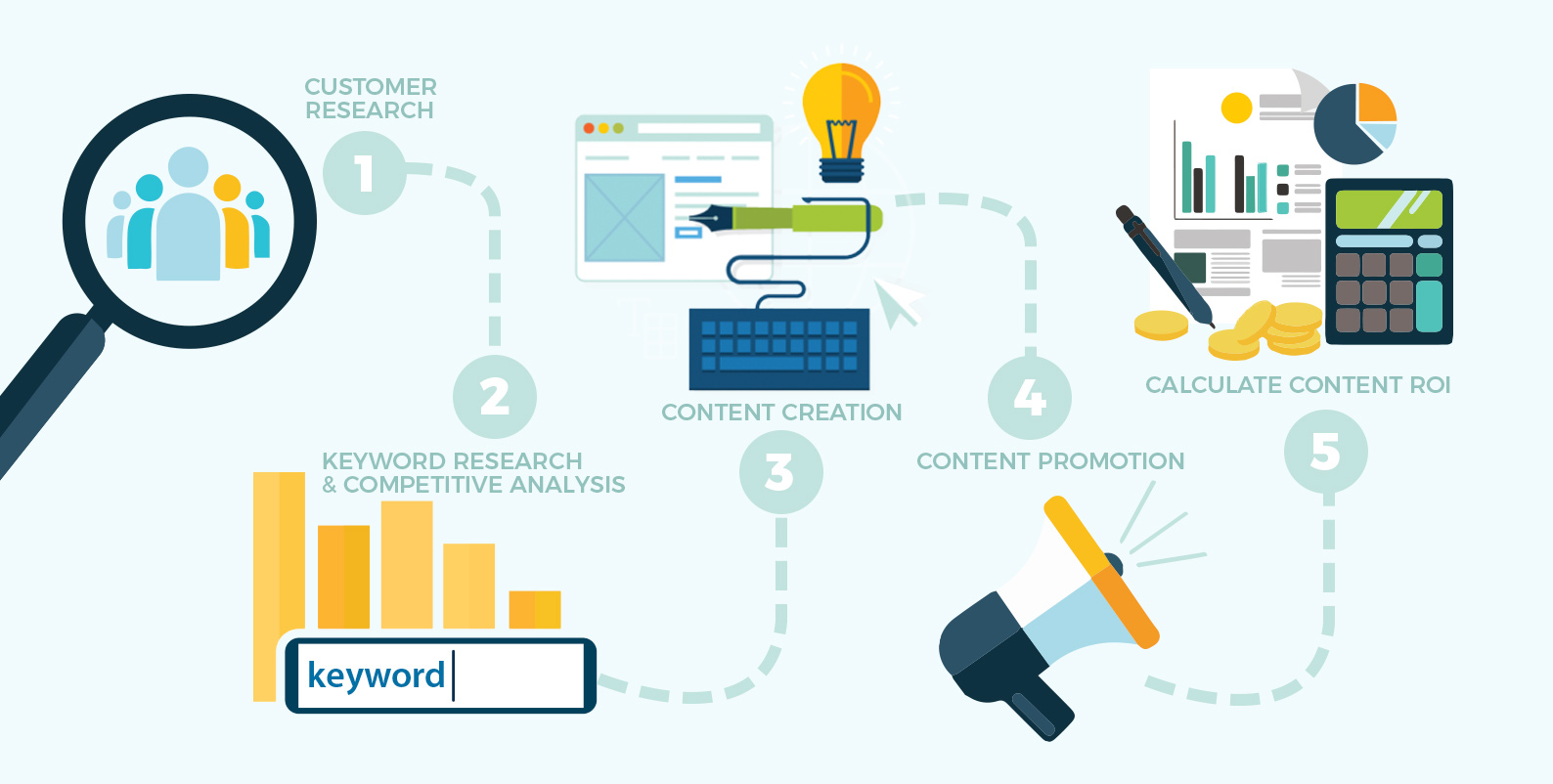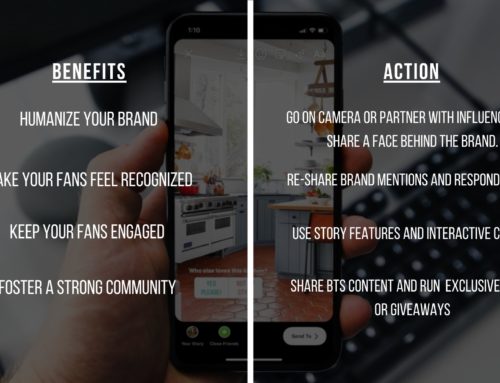We’ve all heard the saying “content is king.” But gone are the days of “if you build it, they will come.” Brands need an effective SEO marketing strategy to attract the right customers and build a lasting audience.
Here at Amplify, we’ve been doing content marketing for nearly a decade. We’ve launched tech lifestyle blogs, published countless tutorials and guides, and produced some pretty sweet videos.
Over the years we’ve learned what works, and what doesn’t for the brands in our industries. And we’ve distilled our approach into a content marketing framework that’s focused on three key objectives:
- Build brand awareness and authority in key categories
- Strengthen web presence by improving SEO and attracting more of the right traffic
- Support the marketing funnel, with content you can use to boost awareness and nurture customers through conversion and advocacy
If you’re a marketer looking to leverage content marketing for your brand, this article is for you. We hope you find it useful!
The Best SEO Marketing Strategy for Brands in 2020
A successful SEO marketing strategy involves more than simply using the right keywords. To make an impact, you need to create great content, promote it through the right channels, and work directly with websites and influencers to build links. Over time, the content will continue delivering SEO value for your brand.
We’ve seen that successful content marketing programs leverage best practices in customer and keyword research, content creation, SEO, link building, outreach, and promotion across multiple channels to maximize results and deliver the best ROI.
Our 5-step strategy includes:
- Customer Research
- Keyword Research & Competitive Analysis
- Content Creation
- Content Promotion
- Calculate Content ROI, and Identify Lessons Learned
Step 1: Customer Research
The first step involves getting a clear understanding of your brand’s target customers. You need to know what topics customers are searching for online, the answers they are seeking, the words they’re using, and the type of content they wish to consume. Using this information, you can create in-depth personas for each of your brand’s target customers.
Some of the questions we like to ask include:
- What is their background? (location, demographics, brand affinities, etc)
- What goals do they want to accomplish?
- What challenges are they facing?
- What motivates them?
- What types of solutions are they searching for?
- Why are they seeking these solutions?
- What are their buying patterns?
- What questions and concerns do they have?
- Where do they look for information online?
- What keywords do they use when searching?
- What messages resonate with them?
Step 2: Keyword Research and Competitive Analysis
The objective of content marketing is to provide the best, most relevant content so you can inform, educate, and entertain customers along their journey. Conducting in-depth keyword research provides insight into exactly what customers are searching for, so you can cover the relevant topics your target audience is interested in.
You can also use competitive analysis to study how other brands are using content to address customer needs, and then identify opportunities for relevant topics that competitors aren’t capitalizing on.
Keyword research and competitive analysis helps you to identify “pillar themes” to build your brand’s SEO marketing strategy around, including a ranked list of SEO keywords and phrases that give your brand the most strategic advantage.
Step 3: Content Creation
Now it’s time to put all that valuable research into practice by creating written and visual content that addresses the themes and topics customers are interested in, so they’ll find your brand when searching online.
Whether it’s a blog article, case study, video, or image, each piece of content can fall into one of three categories designed to serve different purposes.
- Evergreen Content forms the cornerstone of our content strategy, and addresses key topics that interest and engage an audience and remain relevant over time.
-
- Covers key topics comprehensively so your website will rank highly for those search terms
- Builds familiarity, trust and likeability with your customers
- Aligns closely with the keywords and topics people are searching for
- Provides substantial SEO benefits and attracts visitors via organic search
- Uses the “pillar/subtopic” strategy to create comprehensive guides that are SEO gold
- Newsworthy Content leverages trends, current events, or news to prove leadership in a space.
-
- Demonstrates expertise and establishes your brand as a go-to resource in your market
- Highly linkable from other websites which increases SEO value and drives traffic to the site
- Viral Content in the form of highly-sharable infographics, videos, or articles can have a massive impact on your website and blog—a rising tide raises all ships.
-
- Provides a large boost in visitors to the site via social sharing and links
- Raises the SEO value of other articles on the blog
Step 4: Content Promotion
Today’s audiences are overloaded with content from endless sources.
For content to be successful, it needs to be supported by a multi-faceted promotion campaign—including using digital advertising, social media, and link building to reach the highest number of target customers.
We recommend building campaigns to promote your content across social and digital, and working directly with bloggers, influencers, and the press to build links back to your content.
- Link Building: Generating backlinks from well-respected sites is extremely effective, and grows the SEO value of your content, as well as your website as a whole. By working with bloggers and publishers to build backlinks, you can ensure each piece ranks as high as possible.
Here’s how:
-
- Identify competitors who have created similar content that ranks high in search.
- Create a list of high-quality sites that are linking to competitor’s content.
- Reach out to those sites, authors, and blogs directly and ask them to link to your content.
- Social Media: If you already have a social following, you can share and promote content through your channels, and work with influencers to reach an even wider audience.
- Digital Advertising: Using Google retargeting ads, you can bring customers back to your top performing content, and help to move them through the funnel.
Step 5: Review and Improve
It’s always important to take a step back and review and analyze the performance of your content. This enables you to replicate wins and move on from content that didn’t perform well or achieve the intended results.
Feeding this analysis back into your content strategy allows you to fine tune your work, so you can continually improve your processes and deliver the best possible results.
When reviewing performance, we recommend using Google Adwords to calculate the value of the content you create. For example, you can determine the amount of site traffic a blog article has generated over the past month, and then calculate the Google ad spending that would have been required to generate similar results.
Similarly, you can compare the amount of traffic generated by an organic video on YouTube with the cost of running YouTube ads to achieve similar results.
Content marketing delivers ongoing, compounding value that can be directly calculated and measured better than most other marketing efforts.
Want some examples? Check out how customer research and in-depth content led to the highest-performing blog article in Propellerhead’s history.
Let’s Talk
This framework is just a starting point. Book a call with us to discuss how content marketing can help your brand reach new heights.






